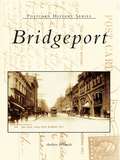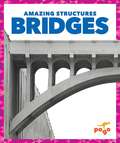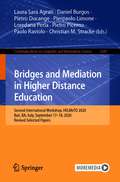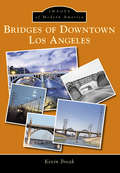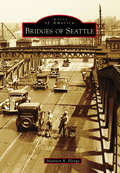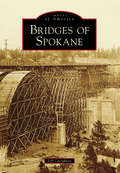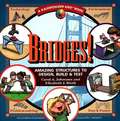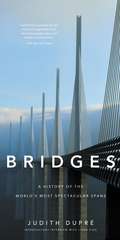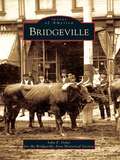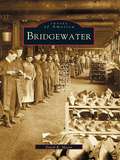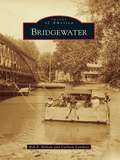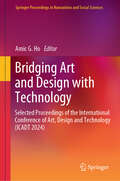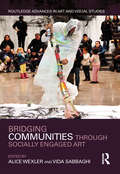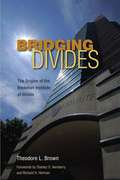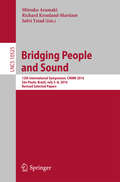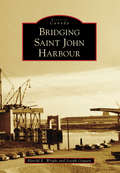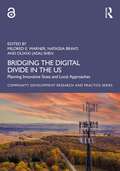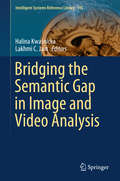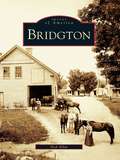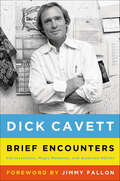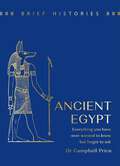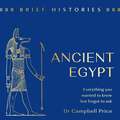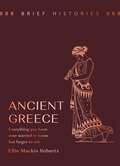- Table View
- List View
Bridgeport: 1900-1960 (Postcard History)
by Andrew PehanickThe golden age of postcards, which took place between 1900 and 1940, was also the golden age of Bridgeport. Local and national publishers printed scenes of the city's beautiful and renowned parks, magnificent mansions, palatial theaters, and sprawling factories, as well as its busy streets and unique architecture. These cards carried images of Bridgeport near and far. Recipients of these mementos could imagine building automobiles at the Locomobile factory, dining at the Amazon Caf©, staying at the Stratfield Hotel, riding the carousel at the Steeplechase Island amusement park, shopping at Howlands, admiring the Wheeler Mansion, attending mass at the South Congregational Church, or watching the activity at the winter quarters of the Ringling Brothers and Barnum & Bailey Circus. Bridgeport takes the modern reader on a journey into the past through nearly two hundred of these vintage postcard images.
Bridges (Pogo: Amazing Structures)
by Rebecca PettifordIn Bridges, early fluent readers will explore different kinds of bridge structures while learning about the science behing the engineering. Vibrant, full-color photos and carefully leveled text will engage young readers as they explore the built world around them. An infographic illustrates parts of a bridge, and an activity offers kids an opportunity to extend discovery. Children can learn more about bridges using our safe search engine that provides relevant, age-appropriate websites. Bridges also features reading tips for teachers and parents, a table of contents, a glossary, and an index. Bridges is part of Jump!'s Amazing Structures series.
Bridges and Mediation in Higher Distance Education: Second International Workshop, HELMeTO 2020, Bari, BA, Italy, September 17–18, 2020, Revised Selected Papers (Communications in Computer and Information Science #1344)
by Daniel Burgos Pietro Ducange Pietro Picerno Paolo Raviolo Christian M. Stracke Laura Sara Agrati Pierpaolo Limone Loredana PerlaThis book constitutes the thoroughly refereed post-conference proceedings of the Second International Workshop on Higher Education Learning Methodologies and Technologies Online, HELMeTO 2020, held in Bari, Italy, September 2020. Due to the COVID-19 pandemic the conference was held online. The 25 revised full papers and 3 short papers presented were carefully reviewed and selected from a total of 59 submissions. The papers present recent research on challenges of implementing emerging technology solution for online, online learning pedagogical frameworks, facing COVID19 emergency in higher education teaching and learning, online learning technologies in practice, online learning strategies and resources, etc.
Bridges of Downtown Los Angeles
by Kevin BreakThe Los Angeles River was tamed years ago. The river, by nature wanting to be violent and random, doses now in a concrete bed through downtown Los Angeles. In the city's core, there are over a dozen bridges that connect Los Angeles across the river--and these bridges are architectural marvels! These bridges were built in the first decades of the 1900s, and their history continues. The largest and longest bridge, the Sixth Street Viaduct, is in the process of being replaced. Others have been upgraded and enlarged; Spring Street is underway now. Many of the bridges were designed by one man, Merrill Butler, who made each bridge different, yet matching. In this volume, the reader will explore the necessity of the bridges, how they came to be, and where they are going in the future. The time is ripe for a reexamination of these jewels of downtown Los Angeles.
Bridges of Seattle (Images of America)
by Maureen R. ElengaSeattle is situated in a region of outstanding scenic beauty, but the forested hills and numerous bodies of water that characterize the city were formidable obstacles to connecting its communities as it grew out from the historic center. Between 1896 and 1930, the city undertook massive landscape regrades, landfills, and waterway cuts to ease movement by land and water. The completion of these efforts allowed for the construction of Seattle's first permanent steel bridges beginning in 1910. Nine bridges included in this book are listed in the National Register of Historic Places. They include Washington's oldest steel arch bridge, the 1911 Twelfth Avenue South Bridge; the 1913 Ravenna Park Bridge; all four of the Lake Washington Ship Canal bascules, constructed between 1917 and 1924; and the Depression-era Aurora, Cowen Park, and Schmitz Park bridges. Bridges of Seattle explores the history of the spans that are a quintessential part of the Seattle experience.
Bridges of Spokane
by Jeff CreightonSpokane's history begins with the arrival of explorer David Thompson, who established the trading post Spokane House in 1810. From that period forward, the area teemed with Euro-American settlers who often mingled with the Native American population. Spokan Falls, officially incorporated in 1881, and by 1891 known simply as Spokane, became ground zero for the extractive industries of mining and logging and later a vast hub for the railroads. These factors led to the greatest boom in the city's history between the years 1900 and 1915. Spokane's growth came on the heels of an increase in the built environment that included the creation of parks, subdivisions, an expanded downtown business district, and an almost feverish movement to create some of Washington's most beautifully designed bridges. Because of this, Spokane has often been referred to as the "City of Bridges."
Bridges!: Amazing Structures To Design, Build And Test
by Carol A. Johmann Elizabeth J. RiethBuild bridges of your design -- from the 'workhorse' truss-beam bridge to the dazzling suspension bridge. Use bridge-building basics, and, along the way, discover how science and creativity come together in the creation of those weight-bearing wonders -- bridges. Choose the best bridge design for different sites. Make decisions about cost, safety, materials, and the environment. Build and innovate using available materials. Test your construction for function and load.
Bridges: A History of the World's Most Spectacular Spans
by Judith DupreFrom the best-selling author of Skyscrapers comes the much-anticipated twentieth-anniversary edition of her magnificent chronological tour of the world's most significant and eye-popping spans, now in color and bigger than ever. This visual history of the world''s landmark bridges is updated and expanded since its initial publication twenty years ago, with all-new photographs and features on cutting edge work by international superstars of architecture and engineering. Spanning two-thousand years of technological and aesthetic triumphs, Bridges stands as the most thorough, authoritative, and gorgeous book on the subject. With its dynamic design and oversized format, the book is as dramatic as the structures it celebrates. Breathtaking photographs capture the bridges' details as well as their monumental scale; location maps and architectural drawings invite you behind the scenes as new bridges take shape; and lively commentary on each explores its historical context and significance. Throughout, informative profiles, sidebars, and statistics make BRIDGES an invaluable reference as well as a visual feast. Technological advances, structural daring, and artistic vision have propelled the evolution of bridge designs around the world. The last thirty years has seen the construction of masterpieces such as the Zakim Bridge that changed the city of Boston; Gateshead Millennium Bridge in England, a pedestrian tilt bridge that closes like an eye when it is raised; the Millau Viaduct in Tarn Valley, France, now the tallest cable-stay bridge in world; and the 102-mile Danyang-Kunshan Grand Bridge in China, the longest in the world. This all-new twentieth-anniversary edition features profiles on these amazing spans and on beloved landmarks, such as the Golden Gate and the Brooklyn Bridge, as well as thematic chapters on lighting technologies, military bridges, and bridges in the movies.
Bridgeville (Images of America)
by John F. Oyler Bridgeville Area Historical SocietyBridgeville has a rich historical heritage dating back to Colonial times. In the early 1800s, a small village grew along the meandering Chartiers Creek between two bridges on the Black Horse Trail. The construction of the Chartiers Valley Railroad, the establishment of the Norwood Hotel, and the opening of commercial bituminous coal mines in the region generated a population boom that motivated residents to seek autonomy from Upper St. Clair Township. In 1901, the borough of Bridgeville was incorporated, and the next 50 years saw the community become the social and business center for the four neighboring townships with schools, churches, and a bustling downtown business environment. Bridgeville remains close enough to Pittsburgh to enjoy the cultural advantages of a big city, yet far enough away to retain the feel of a small hometown.
Bridgewater
by David R. MooreNot long after the Pilgrims came ashore, Bridgewater became the first inland settlement to branch out from the Plymouth Colony, incorporating in 1656. Its fertile soil and bountiful rivers provided for a rich agricultural community. As the Industrial Revolution forced farmers into factories, Bridgewater experienced rapid social and economic growth and change. Iron, shoe, and paper manufacturing flourished, and the railroad brought European immigrants in search of the American Dream. In Bridgewater, vintage images tell the stories of the Bridgewater Academy, the normal school, the changes in and around the common, the business pursuits of local proprietors, and the spiritual and civic life of Bridgewater residents.
Bridgewater (Images of America)
by Bob F. Holton Carleen LovelessThe story of Bridgewater is one of survival. Since its founding in 1835, this community has endured six major floods, economic crises, and a war that took place on its own soil. Despite the adversity it faced, the town has not only prevailed but has grown into one of the strongest and most progressive towns in Virginia.
Bridging Art and Design with Technology: Selected Proceedings of the International Conference of Art, Design & Technology (ICADT 2024) (Springer Proceedings in Humanities and Social Sciences)
by Amic G. HoThis book explores the intersection of art, design, and technology, revealing how new technological innovations are transforming creative practices and opening up new artistic expressions. The book offers a broad context of the ethical and social ramifications of technology-enhanced art and design, addressing issues of privacy and responsible application of interdisciplinary technology in the creative process. It also discusses how artists and designers use technology as part of their response to social and political challenges and as their opinion on current social change. Consisting of selected proceedings papers from the International Conference of Art, Design and Technology (ICADT 2024), the volume begins by examining the historical context of art and technology, detailing key developments that have shaped contemporary creative practices. It also investigates how digital tools and techniques are altering traditional art forms, such as painting, sculpture, and photography. The authors use case studies and deep analysis to portray how technology has encouraged artistic expression to flourish, resulting in entirely new art forms and mediums. In design, the book describes how technology has been channelled into design thinking and problem-solving, with computer-aided design software making design processes more complex. It also discusses how new materials, 3D printing, and parametric design push the boundaries of possibility in product design, industrial design, and architecture. Interactive experiences and immersive environments can transform anything, with VR, AR, and mixed reality turning storytelling and exhibition design on their head. The book provides a valuable aesthetic computing resource for future artists, designers, educators, researchers, and anyone interested in the profound impact of technology on the realm of creativity.
Bridging Communities through Socially Engaged Art (Routledge Advances in Art and Visual Studies)
by Alice Wexler Vida SabbaghiPromoting the expansion of art in society and education, this book highlights the significance of the arts as an instrument of social justice, inclusion, equity, and protection of the environment. Including twenty-seven diverse case studies of socially engaged art practice with groups like the Black Lives Matter movement, the LGBTQ community, and Rikers Island, this book guides art educators toward innovative, transdisciplinary, and diverse methodologies. A valuable resource on creating spaces for change, it addresses the relationships between artists and educators, museums and communities.
Bridging Divides: The Origins of the Beckman Institute at Illinois
by Theodore L. Brown Stanley O. Ikenberry Richard H. HermanBridging Divides offers a first-hand account of the origins of the Beckman Institute for Advanced Science and Technology, an interdisciplinary research institute at the University of Illinois at Urbana-Champaign devoted to leading-edge research in the physical sciences, computation, engineering, biology, behavior, cognition, and neuroscience. The book follows the progress of the Beckman Institute's creation, from the initial conceptualization of a large, multi-disciplinary institute; through proposal formulation; to the architectural design and actual construction of its state-of-the-art building, made possible by the largest gift made to any public university at the time: a $40 million contribution from Illinois alumnus and founder of Beckman Instruments, Inc., Arnold O. Beckman and his wife Mabel M. Beckman. Theodore L. Brown, the founding director of the Beckman Institute, brings an insider's personal perspective on its conception and its early operations. The evolution of a physical facility that matched a developing sense of what multidisciplinary and interdisciplinary research might be was a vital ingredient in the Institute's development. In addition, because the Institute represented a dramatic departure from traditional university organization, many challenges involving its administration and faculty had to be overcome. A celebration of the Beckman Institute's first twenty years of operation since the building's completion in 1989, Bridging Divides provides an informative look back at the history of this groundbreaking interdisciplinary research center. The book also includes forewords by Stanley O. Ikenberry, former president of the University of Illinois, and Richard H. Herman, chancellor of the University of Illinois at Urbana-Champaign.
Bridging People and Sound: 12th International Symposium, CMMR 2016, São Paulo, Brazil, July 5–8, 2016, Revised Selected Papers (Lecture Notes in Computer Science #10525)
by Mitsuko Aramaki Richard Kronland-Martinet Sølvi YstadThis book constitutes the thoroughly refereed post-conference of the 12th International Symposium on Computer Music Modeling and Retrieval, CMMR 2016, held in S#65533;o Paulo, Brazil, in July 2016. The 22 full papers presented were carefully reviewed and selected from 40 submissions. This year's conference theme "Bridging People and Sound" aimed at encouraging contributions from artists and listeners on the one side and audio and music technology researchers on the other.
Bridging Saint John Harbour (Historic Canada)
by Harold E. Wright Joseph GoguenIn the 1850s, lumber mill owner W. Kilby Reynolds, with engineer Edward R. Serrell, succeeded in building the first suspension bridge to connect divided Saint John. This operated as a toll crossing until 1858, when it became a government-owned structure. From then until the present, there have been two vehicular-pedestrian bridges and two rail bridges serving travelers crossing Saint John Harbour at the gorge at the Reversing Falls. By the third quarter of the 19th century, there was talk and plans for a second bridge, one which would cross at Navy Island to the North End. It took about 80 years before this plan came to fruition, and the Saint John Harbour Bridge opened in 1968. Through this rich collection of photographs, Bridging Saint John Harbour clearly shows the importance of the varied connector bridges over Saint John Harbour and how they came to be built.
Bridging the Digital Divide in the US: Planning Innovative State and Local Approaches (Community Development Research and Practice Series)
by Mildred E. Warner Natassia A. Bravo Duxixi ShenThe US faces a deep digital divide which cuts across both urban and rural lines, but is most marked in rural, low income, and minority communities. This book presents a multi-level governance framework which explores how local leaders use policy opportunity and community resilience to address inequity in broadband infrastructure. Cases from communities across the US are profiled to show how local and regional initiatives address the digital divide – how they harness local resources, state and federal funding, and how they navigate regulatory restrictions and financial constraints. Special attention is given to rural and Indigenous communities, where the technological, organizational, and funding challenges are greatest. The federal policy landscape for broadband is changing, and this book provides clear insights on how policy can support the people and places left behind. This book is essential for planners and those studying or working in rural development, rural studies, and community development.The Open Access version of this book, available at www.taylorfrancis.com, has been made available under a Creative Commons Attribution-Non Commercial (CC-BY-NC) 4.0 license.
Bridging the Semantic Gap in Image and Video Analysis (Intelligent Systems Reference Library #145)
by Lakhmi C. Jain Halina KwaśnickaThis book presents cutting-edge research on various ways to bridge the semantic gap in image and video analysis. The respective chapters address different stages of image processing, revealing that the first step is a future extraction, the second is a segmentation process, the third is object recognition, and the fourth and last involve the semantic interpretation of the image.The semantic gap is a challenging area of research, and describes the difference between low-level features extracted from the image and the high-level semantic meanings that people can derive from the image. The result greatly depends on lower level vision techniques, such as feature selection, segmentation, object recognition, and so on. The use of deep models has freed humans from manually selecting and extracting the set of features. Deep learning does this automatically, developing more abstract features at the successive levels. The book offers a valuable resource for researchers, practitioners, students and professors in Computer Engineering, Computer Science and related fields whose work involves images, video analysis, image interpretation and so on.
Bridging the Strait: The Story of The Confederation Bridge Project
by Copthorne MacdonaldJune 1997 marked the opening of the Confederation Bridge which spans the Northumberland Strait and connects Prince Edward Island to New Brunswick. The bridge, designed and built by the international consortium Strait Crossing, is one of the most innovative engineering projects undertaken in Canada. It is the longest bridge ever constructed over ice covered water and one of the longest continuous multi-span bridges in the world. Bridging the Strait describes the arduous trips taken by ice boats, ferries, steamers and ice breakers which have been the link to PEI. The author, Copthorne Macdonald, traces the events leading up to the building of the bridge. He explains the problems faced by the Strait Crossing team, and tells the story of how they overcame challenging obstacles such as ice, wind and treacherous ocean currents. The stunning achievement of the Confederation Bridge is celebrated in this handsome book. It highlights the contribution of Strait Crossing, and Public Works Canada, who steered the project from conception to completion, and it provides a fitting tribute to the engineers and designers who solved the technical problems and the workers who sacrificed to bring the project to fruition.
Bridgton (Images of America)
by Ned AllenIn 1768, Jacob Kimball moved to the shores of Long Lake in North Bridgton, building a store and providing boat service from Standish, at the southern end of Sebago Lake. Jacob Stevens soon followed, building a sawmill and gristmill on what became Stevens Brook in the center village. Ten power sites on this short brook ran lumber, textile, and other mills, as well as a tannery. Bridgton became the area's commercial center as retail stores and businesses sprang up to support the many mill workers and farm families. The first train on the narrow-gauge Bridgton and Saco River Railroad chugged into town in January 1883. Tourists and artists soon discovered Bridgton, and today the town remains a diverse mix of creative, hardworking people.
Brief Encounters: Conversations, Magic Moments, and Assorted Hijinks
by Dick CavettReminiscences from the legendary talk show host: “Erudite and witty . . .Brief Encounters is very good and very funny.” —Chicago TribuneOn his talk show, Dick Cavett welcomed leading figures from film, music, theater, literature, comedy, and politics, and engaged them in conversation that made viewers feel like the discussion was taking place in their own living rooms. In Brief Encounters, Cavett introduces us to the fascinating characters who have crossed his path, and also offers piquant commentary on contemporary politics, the indignities of travel, the nature of comedy writing, and the utter improbability of being alive at all.“A touching essay about the late James Gandolfini, a fond remembrance of an afternoon at Stan Laurel’s small Los Angeles apartment, sparring with Muhammed Ali, and being talked into signing on as Apple’s first celebrity pitchman by a young Steve Jobs are all here, as are Cavett’s warm memories of John Lennon.” —Esquire“Includes numerous observations about contemporary culture and politics—neither Democrats nor Republicans are spared.” —USA Today“A delightful peek behind the curtain at celebrities, complex characters, and the nuances of everyday life—all told with his singular wit and style.” —Publishers WeeklyIncludes a foreword by Jimmy Fallon
Brief Histories: Ancient Egypt
by Dr Campbell PriceJourney back in time to explore one the most fascinating and influential periods of ancient history.In this concise and incredibly readable short history, Egyptologist Dr Campbell Price asks us how we know so much about life in ancient Egypt, from the working lives of pyramid builders to the power of the Pharaoh. The book explores the complexities of the hieroglyphic writing system, the meanings behind the ritual of mummification, and the functions of Egyptian art. What was the legacy of famous pharaohs like Tutankhamun and Queen Cleopatra, and how does the colonial nature of archaeology shape our understanding of ancient Egypt.Brief Histories answers the most popular on ancient Egypt with some new perspectives on this fascinating civilisation.
Brief Histories: Ancient Egypt
by Dr Campbell PriceJourney back in time to explore one the most fascinating and influential periods of ancient history.In this concise and incredibly readable short history, Egyptologist Dr Campbell Price asks us how we know so much about life in ancient Egypt, from the working lives of pyramid builders to the power of the Pharaoh. The book explores the complexities of the hieroglyphic writing system, the meanings behind the ritual of mummification, and the functions of Egyptian art. What was the legacy of famous pharaohs like Tutankhamun and Queen Cleopatra, and how does the colonial nature of archaeology shape our understanding of ancient Egypt.Brief Histories answers the most popular on ancient Egypt with some new perspectives on this fascinating civilisation.
Brief Histories: Ancient Egypt
by Dr Campbell PriceJourney back in time to explore one the most fascinating and influential periods of ancient history.In this concise and incredibly readable short history, Egyptologist Dr Campbell Price asks us how we know so much about life in ancient Egypt, from the working lives of pyramid builders to the power of the Pharaoh. The book explores the complexities of the hieroglyphic writing system, the meanings behind the ritual of mummification, and the functions of Egyptian art. What was the legacy of famous pharaohs like Tutankhamun and Queen Cleopatra, and how does the colonial nature of archaeology shape our understanding of ancient Egypt.Brief Histories answers the most popular on ancient Egypt with some new perspectives on this fascinating civilisation.
Brief Histories: Ancient Greece
by Ellie Mackin RobertsJourney back in time to explore one the most fascinating and influential periods of ancient history.In this concise and incredibly readable short history, Dr Ellie Mackin Roberts journeys from the warrior societies of The Bronze Age all the way to the invention of democracy during the golden age of Athens, charting the incredible rise and fall of the Greek world and revealing just how much the Greeks influenced the world we live in today, from art and philosophy to architecture and politics.Brief Histories: Ancient Greece is the perfect short introduction for anyone interested in the Greek world and all it has to offer.
